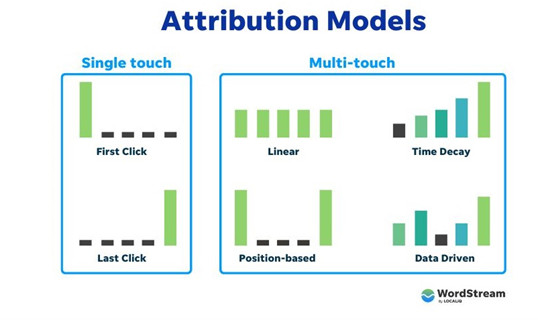It’s hard to believe, but Google Ads has been around for 22 years. Introduced in October of 2000 as Google AdWords, it has evolved from a very basic online advertising platform to perhaps one of the most complex, sophisticated online advertising platforms. The pace of change shows no signs of slowing down, and to get the most value for your advertising budget out of Google Ads, it is important to remain up to date on the changes. Below are some of the more notable changes that Google made in 2022.
Keyword Matching Updates
A major change to keywords was the elimination of the “broad match modified” keyword. These keywords were designated by a plus sign “+” in front of them, signaling that that particular piece of the keyword phrase was not to be “expanded out” to synonyms for that word. The broad match keyword “brown shoe,” for example, can match searches for “hazel loafer,” “tan pumps,” “umber slippers,” “chocolate moccasin,” or any one of thousands of similar variations and combinations. Marketers had the option of adding a plus sign in front of any or all of the components of the broad match keyword, and it would limit matches to very closely related variations of the words involved. For example, “+brown +shoe” would only match to searches for “brown shoe,” or “brown shoes,” “shoes brown,” or “shoe brown,” giving a much more finely tuned range of searches that your ads would show for on the search engine results page.
Along with this change to keyword matching, Google now recommends that you use only broad match keywords in campaigns that use “Smart Bidding” methods like Maximize Conversions, Target CPA or Target ROAS. Most managers of Google Ads campaigns are understandably reluctant to follow this advice, as the risk of relying on Google’s algorithm to always match keywords to only highly relevant searches (when in the past they have “matched out” to literally thousands of possible “synonyms”) could cost advertisers large portions of their advertising budget for clicks on highly irrelevant searches. Google Ads account managers should approach this advice with caution.
Data Added (And Taken Away From) the Search Terms Report
Over the years Google has been removing the quantity of search terms reported in the Search Terms Report. The report shows the actual search queries that people type in the Google search engine that match keywords in your campaigns, and the reduction has caused concern among most search ad professionals. This information was particularly helpful in determining whether your keywords had sufficiently narrow match types and whether your negative keyword lists were robust enough. This past year, Google returned to a more complete reporting of search queries, helping search specialists to maintain much more control over what continues to trigger their ads to show. At the same time, however, they did remove a certain subset of queries from the report from before September of 2020 that failed to reach their minimum threshold volume of reporting. This is to limit the possibility of revealing any potential “personally identifiable information” that someone could type in a search query – as unlikely as that might be.
End of Expanded Text Ads
There have been three iterations of search ads in Google Ads. The first were rather simple, with space for two headlines, two description lines and a “display URL.” Those started to be replaced by “expanded text ads” (ETAs) in 2016 and could no longer be created or changed within a year or two after the ETA’s introduction. In the same way, expanded text ads, which have up to three headlines, and more space for the description while able to show as many as two descriptions at the same time, were sunsetted earlier this year. Like the original text ads, ETAs are now no longer editable, but can continue to show for the time being.
Expanded text ads have been replaced by responsive search ads, or RSAs. RSAs accept up to 15 separate headline possibilities and four potential description fields. At the time your ad is shown during a relevant search, Google pulls from the various possibilities you have created up to three headlines and two descriptions to assemble an ad that is presumably most relevant to what the searcher is searching for.
For ad groups that still only have Expanded text ads, it is critical to craft responsive search ads soon to start testing their performance. Also, if any changes are needed to be made to ad copy, they will have to be done to RSAs, as the ETAs are no longer editable, and will have to be paused if the headlines or descriptions are no longer suitable for use. This often occurs due to changing special offers, seasonal changes or changes to products or service offerings. Having responsive search ads already running will give Google Ads’ algorithms a chance to test out various combinations of headlines and descriptions that work well with varying search terms.
Google Auto-Switching Some Conversion Actions to “Data Driven Modeling”
For years, the default attribution model used by Google Ads has been one based on the “last click,” where the last ad that was clicked on got all the “credit” for having generated a conversion action. Because the customer’s journey before a conversion often involves seeing one or more ads without interacting with it in any way, this is an over-simplistic way to attribute the value to the ads that may have played a part in reaching the desired goal, whether it be a sale, a lead or even a download of a sales brochure.
Data-driven attribution modeling, on the other hand, attempts to estimate the relative contributions of the various ads seen over the course of individual customer journeys. This data is aggregated, and the value estimated for each ad that was seen or interacted with in some way. One of the main differences in how conversion is reported is that last click attribution can only be reported in whole numbers. Since data-driven attribution shares credit among the various touchpoints along the way, it can be expressed as a decimal fraction of one or as a one, if the ad was only ad seen or interacted with once before the conversion.
Using data-driven attribution should give advertisers a more accurate picture of the contributions of various ads along the way. With other models, especially “last click,” no value is given to upper funnel or branding ads, even though they likely made the last click before conversion possible. This data not only helps advertisers make better decisions, but the data also helps inform Google’s own smart bidding algorithms to make it more efficient to drive higher return on ad spend.
 Source: https://www.wordstream.com/blog/ws/2021/11/15/multi-touch-attribution
Source: https://www.wordstream.com/blog/ws/2021/11/15/multi-touch-attribution
Google Ads and Google Analytics Conversion Tag Updates
Google has simplified conversion tracking by combining Google Analytics sitewide tagging with Google Ads tagging so one tag, called the “Google Tag” will send data to both Google Ads and Google Analytics simultaneously. This change simplifies setup and makes conversion reporting more consistent between Google Analytics and within the Google Ads platform. With two separate tags, there have often been discrepancies in conversion data between the two. There is also now a unified and identical Google Tag screen that is available from within both Google Ads and Analytics.
Keeping Up with Changes
There are multiple sources to keep up with the constant changes being made to the Google Ads platform, not the least of which is the Google Ads blog, found at blog.google/products/ads-commerce. This is the official source for announcements regarding upcoming changes to the platform. Google Ads is a powerful advertising platform, and it is wise to keep up with the constant changes to ensure that your advertising budget is spent efficiently.
